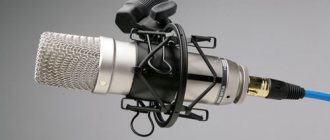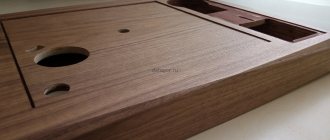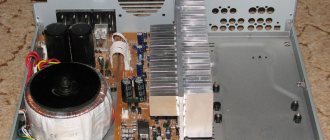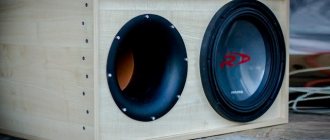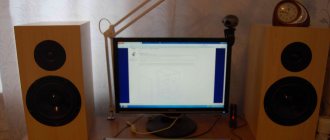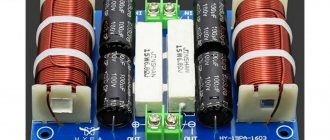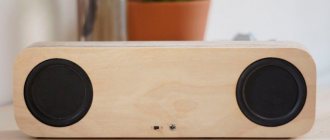Most often, those who need to not only check, but also adjust the amplitude-frequency characteristics of a living room, studio, concert hall or any other room decide to make a measuring microphone with their own hands. In this situation, the product is used in combination with a test signal generator and a powerful spectrum analyzer. It is worth noting that the latter unit can be presented as a separate hardware device. Some craftsmen have learned to replace it with computer programs. Recently, high-quality monitor processors have gained enormous popularity. These are advanced software and hardware solutions. They may include measurement microphones, test signal generators and software. Due to this, it is possible to adjust the amplitude-frequency characteristics.
Description
Before you start making a measuring microphone with your own hands, you need to study which parameters are the main ones in the unit. Experts note the following characteristics:
- Operating principle and purpose. The finished microphone can be used in different industries, which is why certain requirements are imposed on the unit. Each case has its own positive and negative characteristics, which the user can adapt to his needs.
- General focus. This is a peculiar ability of the device to respond to even the most insignificant changes in sound pressure relative to the direction of sound. The final parameter depends on the design of the capsule, which is the basis of the entire product.
- Sensitivity. This ability characterizes the overall efficiency of the product to convert incoming sound pressure pulses into current. Due to this, a specialist can understand exactly what voltage will be at the output of the unit at a certain sound pressure. The higher the sensitivity, the higher the resulting results will be.
Every beginner who decides to build a measuring microphone with their own hands should know that this device converts changes in sound pressure into electric current. To work, you can use the simplest scheme.
Condenser microphone - what is it?
Taking into account the method of processing sound waves, condenser and dynamic microphones can be distinguished. Both groups of sound recording devices are popular among users, and the choice of a specific solution is determined primarily by the planned use of the microphone.
Capacitor devices consist of movable covers and a steel mesh diaphragm, which when formed form a special type of capacitor. Its capacitance changes due to vibrations of the membrane caused by sound waves, and the resulting electrical impulses are transmitted to the recorder.
The complex design of condenser microphones and the resulting high quality of this type of device are reflected in the price. Condenser microphones are not only some of the best (most sensitive) devices, but also the most expensive. Despite their high price, they are often chosen where the quality and accuracy of the recorded signal matter.
Focus
This parameter displays the product's sensitivity to the primary sound location. Today, every master can build a measuring microphone with his own hands, which will be suitable for a certain direction:
- Supercardioid. The sound is perceived rather narrowly; the noise that comes from the rear of the installation is partially captured.
- Cardioid. The microphone only picks up sounds that come from the front. Hypercardioid. The “rear” zone prevails over all others.
- Eight. The product responds equally well to sound coming from the front and rear.
A homemade measuring microphone can be omnidirectional. Such products perfectly perceive sound from any point. Advanced models can be equipped with a universal switch that allows you to adjust the necessary parameters.
Nutrition
Some microphones may be classified as “phantom”, where the required current is supplied through a cable that connects the unit itself to the receiving installation. This option eliminates the need for the user to independently monitor the battery charge level. Freedom of movement directly depends on the length of the network cable. Products with high-quality batteries are in greatest demand. But you need to remember to recharge regularly. A master can make a measuring microphone for frequency response analysis, which will operate from two power sources at once. This is the most profitable and multifunctional solution.
Characteristics
Measuring microphones differ in their level of sensitivity. Can be measured in decibels as well as millivolts per pascal. The technician must take into account the rated resistance of the unit to alternating current. It is this parameter that determines the compatibility of the microphone with the existing equipment to which it is connected. Impedance is especially important in professional environments. If the product operates in conjunction with a smartphone, computer or laptop, then the rated voltage is not such an important parameter.
What to prefer?
Concluding the review of the most popular models in the user rating, it remains to answer the most important question about which microphone for PC to buy. It all depends solely on the purpose for which this device will be used.
If you only need it for communication, you can choose any inexpensive model (either a lapel type or a tabletop type), but you should especially pay attention to the stability or strength of fixation. For dubbing some of your own projects where high quality recording is required, it is better to use microphones of a higher cost
In terms of connections to a computer sound system, it is better to choose analog condenser-type models. However, the question of preference still remains with the user.
Classic scheme
If you prepare all the necessary tools and materials in advance, then at home you can build a homemade measuring microphone from WM60. To avoid the most common mistakes, you need to familiarize yourself with the elementary diagram in advance. Voltage is supplied to the capsule through a powerful 15k resistor. In parallel, the unit includes a ceramic capacitor, which independently eliminates high-frequency interference and interference. After this, the signal goes to the first stage of the amplifier.
Main stages
As a solid base, you can use a chrome-plated metal tube, as well as a housing from an old probe or sensor. The classic version consists of 2 basic parts. The first is a durable microphone housing made of a chrome-plated tube. An electret capsule and a printed circuit board are necessarily installed in the internal compartment, on which the components of the first amplifier stage, as well as the voltage stabilizer, are pre-soldered. The second part is represented by a small box with an XLR connector and a printed circuit board with matching stages. You should always remember that all parts are designed for specific cases, which is why some mechanisms may simply not fit. When considering how to install a measurement microphone, you need to remember that the power will be supplied via XLR, from a 48 V phantom source.
Variety
This type was created for the stage. In the minds of the viewer, the stage is associated with a hand-held microphone, which has a handle and a capsule protected by a mesh. Yes, in most cases this is the design. After all, it fits perfectly into the holders. In addition, you can easily select a replacement mesh for wind protection.
This type can also be divided into wireless and wired. What is a wireless microphone? This is a battery-powered device with a built-in communication adapter.
What do users say about stage microphones? The reviews are different, but they agree that you need to choose more expensive models.
Equipment
The measuring microphone can be equipped with a receiver, which is perfectly compatible with various audio equipment. Many craftsmen prefer to use a transmitter, which is ideal for compact units with wireless power. This is an excellent option for professionals, as many working nuances are significantly simplified. You can also build a holder for a stand or tripod. This approach will appeal to those who work in the instrumental and vocal industry. The product will also be useful in concert activities.
Functionality
The presence of a flexible leg allows you to easily change the position of the main capsule without first moving the microphone itself. For these purposes, a rigid leg with a universal swivel mount can also be used. The user can connect a microphone to their computer to conduct conferences over the Internet. The radiation pattern can be controlled by switching the radiation pattern. In professional products, this function is actively used to switch between different work areas. If the master has sufficient skills, then he can also build a headphone output, making the product universal. This option is typical for studio equipment, as it allows you to control the quality of the vocal recording. It is worth noting that headphones are most often connected via a mini-Jack. If you need to reduce the output signal level, then you simply cannot do without an attenuator. Specialists use this device to effectively attenuate the sound volume so as not to overload the equipment.
What types of microphones are there?
- Studio - These microphones are designed for recording audio in the studio or at home. They are available in large and small sizes. The latter includes the AKG P220. It is on these microphones that audio tracks for films and music albums are recorded. They are used in the same way by bloggers and streamers. Most often they are connected via a USB cable or a 3.5 mm jack.
- Concert microphones are a type of microphone used during live performances. Microphones can be wired or wireless, connected to an amplifier, and often have a handle. These microphones are also often mounted on a stand.
- Reporter Microphones – This type includes both loopback and boom microphones that are attached to the recording device. A good example of such a microphone is the Raylab Rec. DH LavMic, which is also designed for bloggers and outdoor work.
- The headphones have built-in microphones that combine with the headphones, like Apple's AirPods.
The condenser microphone is suitable for shooting in good weather. Photo: raylab.ru
Other types of microphones
Microphones for video cameras - used in tandem with a video camera, for which a special attachment is attached to its body.
Voice recorder microphones - used in conjunction with voice recorders. Although these devices have a built-in microphone, in many cases an external device will work more efficiently.
Microphones for video production are divided into two categories:
- for “field” signaling - omnidirectional dynamic microphones with good sensitivity;
- For studio work - mono or bidirectional condenser models that provide high quality sound transmission.
Microphones for conferences - used in press centers, on podiums
They provide good sound quality regardless of the position of the speaker in relation to the microphone, which is important for a comfortable conversation
